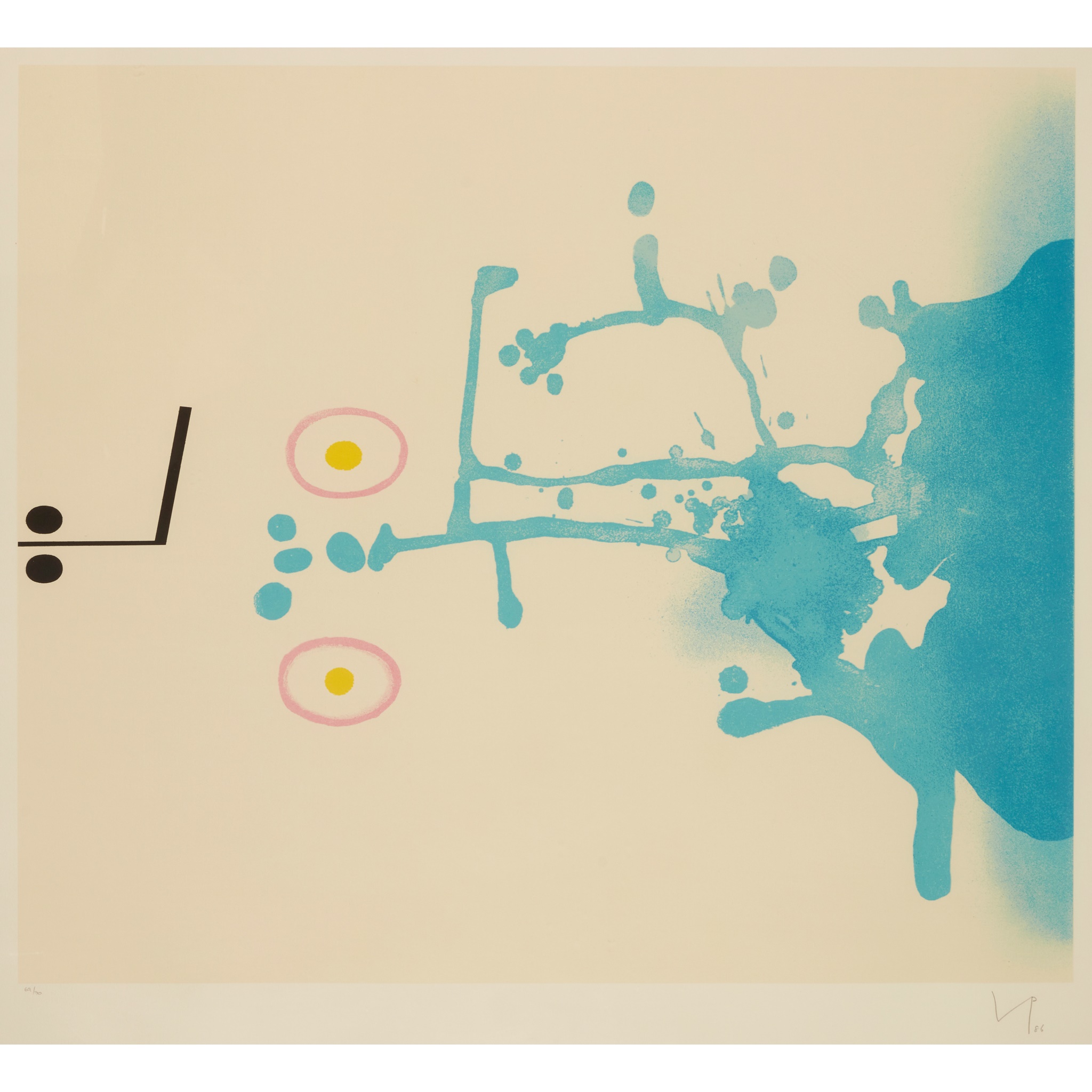VICTOR PASMORE C.B.E., C.H. (BRITISH 1908-1998) §
BLUE FANTASY II - 1986
£2,750
Contemporary & Post-War Art // Prints & Multiples
Auction: Prints & Multiples: 06 April 2022 | From 15:00
Description
Screenprint, 69/70, signed with initials, dated and numbered in pencil to margin, published by Marlborough Fine Art, London, printed by Kelpra Studios, London, with their blindstamp
Dimensions
the sheet 88cm x 103cm (34.5in x 40.5in)
Footnote
Note: Victor Pasmore didn’t move towards his signature abstract style until 1947, in a move the art historian Herbert Read described as ‘the most revolutionary event in post-war British art.’ In 1966 Pasmore re-located to Malta and it was in this same year that he began experimenting extensively with printmaking, starting with the 2RC printshop in Rome. From then on, printmaking became a significant part of his artistic practice and he worked with many important print studios, including Kelpra Studio and Curwen Press.
With time, and this significant move to both warmer climes and into printmaking, Pasmore’s work softened and his hard-edged geometric forms gave way to more curving shapes and the wandering lines and areas of deep colour that we can see in this selection of work. The resulting images are characterised by a simplicity and fluidity that evokes a strong sense of balance, even peacefulness. This sense is magnified by his chosen titles, which imbue the pieces with a mystical quality.

